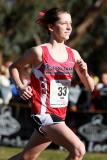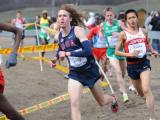Folders |
Building the Sport of Track and FieldPublished by
Every four years, immediately after the closing ceremonies of the Olympic Games, fans, officials and media members loudly discuss what the sport needs to do in order to maintain the momentum and success it saw during the Olympics. Whether it was Usain Bolt proving once again that he’s the greatest sprinter in the world, or the American women’s 4x100m relay team running a world record, or Mo Farah inspiring with his 5k/10k double, the interest in track and field is never greater than immediately after the Olympics conclude. While it’s fun to debate how to popularize the sport, it’s counterproductive. Ideas to build on the success of the Olympics shouldn’t be formulated after the Games, rather they should be hashed out, organized and set in motion a few years before the Games even begin. Maximizing Usain Bolt’s worldwide appeal needs strategy and resources behind it, which doesn’t happen now, rather it happens years earlier. With that said, here are a trio of ideas USATF and other interested parties in the U.S. can take between now and Rio 2016 to create excitement leading up to the Games, ultimate exposure during the Games, then build off the success after the Games. Build the Fan Base USATF claims they are building the sport through grassroots youth programs, but what are they really doing to build the next generation of fan? It’s one thing to support athletes in their quest for top performance (this is needed), but the organization also needs to focus on build these young athletes into life-long fans of the sport. This can happen in one of two ways. First, encourage coaches to be spokespeople for the sport. Most coaches, no matter how devoted they are to being great coaches, genuinely care for the sport. Providing them resources (videos, newsletters, events) to show their kids how amazing the sport is and who they should cheer for is key. Many parents with kids involved in the youth system (6-18 years old) have no idea about the sport, rather it falls on the coaches to do the educating and promotion of the sport. Second, go where the athletes are. Spread information, videos and photos on athletes, meets and results across the web. Use social media to spread the sport’s message. Capture email addresses and send out weekly, or even daily, newsletters with information that is going to spark increasing engagement with the sport from a fan perspective. Track and field doesn’t have the luxury to be on television every day, and certainly doesn’t have millions upon millions of marketing dollars to spend, so building the base has to be done in cost-efficient, creative ways. Have One Location for Information Building the base is key, and similar to spreading the information out, the leaders of the sport ultimately need to drive fans and potential fans to one hub. This comes from having one website that every event drives to, where coaches send their kids, where new fans of the sport can go to learn about it. It’s not about covering the high school or college side of the sport, because those are being covered, it’s the job of the leaders of the sport to drive interest in the professional side of the sport. No website currently drives the amount of information, education and entertainment around the professional side of the sport as should be presented. Unfortunately, the vast majority of American professional track and field athletes head over to Europe for the summer, the peak of their fitness, competing in meets around the continent. While some sites capture some of this action, it’s not enough. All the marketing dollars in the sport would be put to much better use building an amazing website, hiring a strong staff of content creators and programmers, while driving all those who are interested in the sport to one site, one hub, one spot that will satisfy all fan needs. Build Communities The NBA, MLB, NHL and NFL have 28+ cities with teams, meaning they have 28+ cities with large contingents of fans. Major League Soccer even has a collection of 19 cities with teams. How many cities in the United States can claim they have a large track and field fan base? You can’t compare major league teams to a sport that’s basically a collection of individuals, but the idea is the same, and what USATF and other vested individuals could do is start building up track and field communities in the U.S. For example, the city of Chicago, and the surrounding suburbs, has potential to be a strong track and field hub. There are numerous youth programs, hundreds of middle school and high school teams, a few top-tier track and field facilities, handfuls of running specialty stores and a long history in track and field success. With the right resources put into the Chicago area, the city could be a track and field hub. What are the right resources? Start with bringing top athletes into the area to speak to athletes. Work with running stores to host events around big, televised track and field competitions. Work with the coaches of the clubs and schools, similar to what we discussed in points one and two, to drive interest with the athletes. Do this with 20 cities across the U.S., some large some small, and you have a network of track and field fans from coast to coast. Ultimately, the long-term, four-year goal should be to build a network of passionate, young, educated track and field fans. Building track and field communities by supporting coaches and athletes with information and entertainment will allow the governing bodies of the sport to continue the success raised through the Olympics.
|










